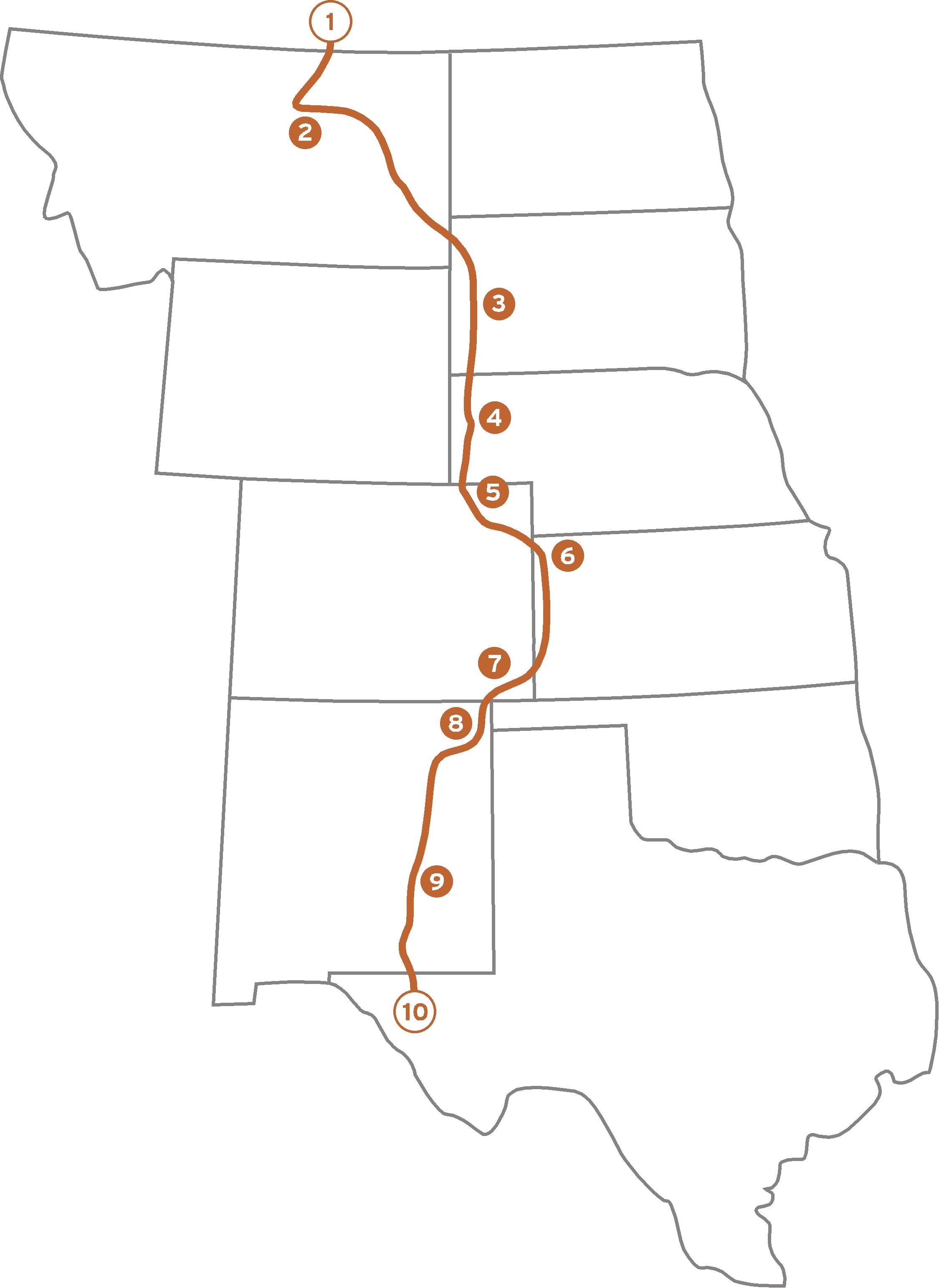From colonial times until the late Industrial Revolution in the mid 1800s, America was a largely rural and agrarian nation. Most people lived on farms or in small towns. The cities that existed were a mere shadow of what they would become. Even New York City, which is every American’s idea of what a big city is, and has held the number one spot in terms of population since official records began in 1790, had only about 60,000 residents in 1800. By 1900, it would have more than 3 million residents. Since the Industrial Revolution, nothing has dominated the American story more than big cities.
Given that view, it is interesting to note the general lack of cities in the entire Great Plains region. The region is dotted with countless small towns and some larger towns, but big cities are nowhere to be seen. The closest that big cities come to the Great Plains is to look in from its edges. Denver, Kansas City, Dallas/Fort Worth, and Minneapolis/St.Paul all fit this model. Probably the largest city entirely within the Great Plains is Wichita, Kansas (pop. 382,000), and even Wichita could be considered to be on the eastern boundary, depending on how you define it. To most people who were “settling” the interior of the continent, the Great Plains was a place to extract resources, which could then be sent by train to the larger cities at the fringes, and not a place to establish a large metropolis.
There are lots of reasons for this, most of them are of a practical or economic nature. The Great Plains were landlocked, devoid of timber for construction, lacked for true navigable rivers, and the dryness and other extremes of climate made for poor farming in general.
That’s the history of the Great Plains. The current state of affairs is in some ways very similar, but there is also a unique opportunity that exists to change, if only slightly, the dominant structure of the last 100+ years. It’s true that the Great Plains still look to the big cities on its border for commerce and culture, and it’s also true that the extraction of resources remains high on the economic agenda of the plains – witness the recent oil boom on the Bakken Formation in western North Dakota, as well as the huge increase of natural gas wells in many areas of the Great Plains.
But it is also true that the lack of historical urban developemt across the plains has left a landscape that is largely intact. Its ecology and hydrology has been altered greatly, but the overall look of the landscape, in many areas, has not significantly changed from the days when the buffalo freely roamed. This landscape of wide open spaces can be inspirational, and I suspect it’s what most people who have chosen to live in this region would cite as one of its best traits.
The Great Plains may not have the economic or cultural draws of the cities that lie on, or beyond its borders, but it can offer what has long been forgotten in most of the rest of America: a chance to see the land (if you squint just a bit) the way our grandparents, great grandparents, or even great great grandparents saw it.
What better way to experience this than to have a trail devoted to the beauty of this place that has been so often overlooked.



2 Responses
excellent post…
Thanks!